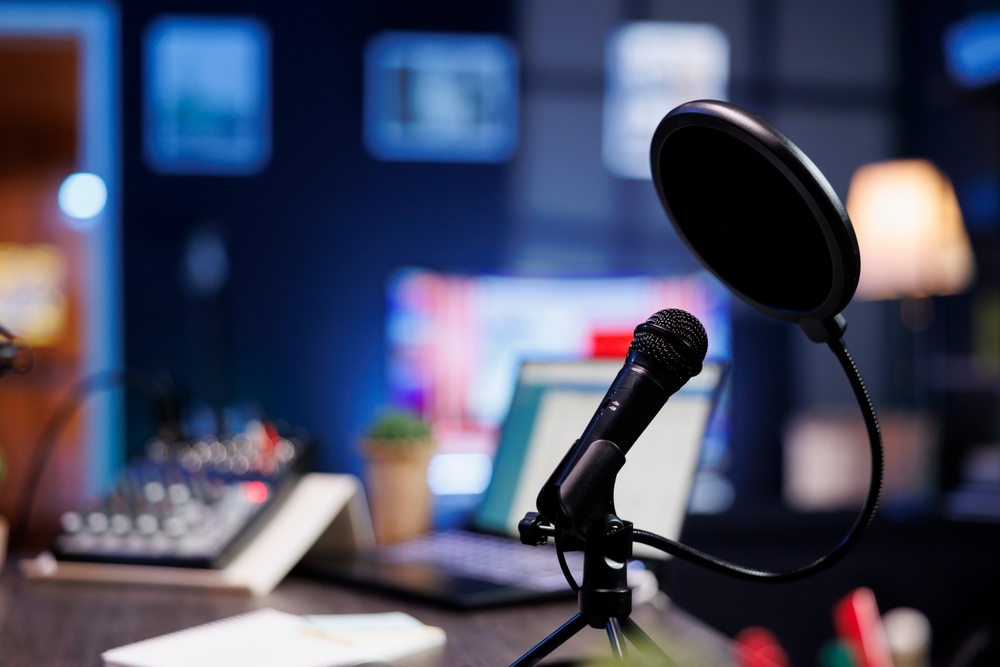Podcasts have become an integral part of daily life for millions, with over half a billion people globally tuning in regularly. This growing audience presents an opportunity for brands, with new figures suggesting podcast consumers are a desirable bunch. Yet podcast advertising remains an underleveraged channel. The question is: why?
New data shows that more than more than 50% of Americans now listen to podcasts every month. And research from Edison Research underscores the lucrative potential of podcast audiences. Monthly podcast listeners are not only more likely to hold a university degree, but they are also more likely to be employed and affluent compared to the general population. And while listenerships are diverse, podcasts are particularly popular among Gen X: a demographic known for its disposable income.
Podcasts should be a marketer’s dream: podcast ads boast a 73% brand recall rate, and recent data from Acast reveals that podcast advertising delivers 4.9 times the return on ad spend (ROAS) of traditional media, making it one of the most profitable channels. It’s also frequently referred to as a trustworthy media channel. Yet the podcast advertising market grew by just 5% in 2023: its slowest growth rate in a decade. While overall digital advertising increased by 7.3% that year, podcasts lagged behind, suffering disproportionately as mid-size companies trimmed their ad budgets.
A Young Medium and a Complex Buying Process
So what’s holding brands back?
Podcasting is a relatively young medium. While it has grown significantly since it hit the mainstream around 2014, it remains far behind the behemoths of Big Tech in terms of creators and ad spend. Estimates suggest there are around 4 million podcasters in the world, compared to 114 million Youtubers. This is largely because only a small percentage of podcasters make money.
When it comes to advertising, podcasting is a slow medium compared to other digital media channels. Audio ad production takes on average two to three weeks, often leaving the advertiser with a single ad to run for an entire campaign.
Buying ad space on podcasts and measuring success is also complex. There isn’t a single platform where listeners get their podcasts, which makes gathering audience data, targeting and reporting on campaigns complicated. There is no one-stop-shop for accessing podcast audiences, which means advertisers must cobble together strategies using multiple platforms and networks, all of which operate differently. This is in stark contrast to digital advertising platforms like Google, Meta and TikTok, which make it easy for brands to produce, launch, scale and measure ads. So what needs to change?
How to Evolve to Compete
First of all, podcasting needs to evolve to compete for budgets with social media channels. We need to start by lowering the barrier to entry for advertisers. Podcasting cannot thrive if podcasters are fighting for a limited pool of advertising budgets from already devoted buyers. We need more brands spending in order to attract more great creators pulling in larger audiences. This sets in motion the flywheel of a functioning ad market where everyone benefits and grows.
We also need to make it easier for brands to advertise on smaller shows. Recent research by Oxford Road and analytics company Podscribe reported that the ad load (i.e. the number of ads per episode) is increasing in the most sought-after podcasts. This means new and small podcasts would be lucrative spaces for advertisers: brands would command a higher share of voice than they do on big shows already busy with ads, and smaller creators would earn money and attract new voices to enter the space.
And ultimately, brands need to be invited to the table. Most podcast networks impose a minimum ad spend in order to service advertisers with host-reads and ad productions. This is understandable, as media vendors often need to produce ads for brands to compete. But while this is financially sound by the media vendors, the minimum spend limits block new advertisers from entering the market, and disincentivizes creators and new voices to enter podcasting.
The Role of AI
With the advent of AI audio editing tools, the audio ad production process can be streamlined, powering unlimited ad production, rapid iteration and significantly reducing production costs for brands and media vendors. This means the minimum spend threshold can be lowered and allow for new brands to experience the power of the podcast medium. By making ad production unrestricted, fast and cost-effective, new brands can spend more on media impressions and increase their chances of a positive ROAS. Furthermore, existing brands can create variations tailored for different audiences, combat ad-fatigue and go live with ads at the speed of culture.
While podcast advertising has historically presented a challenge for brands, the landscape is evolving and improving. This is due to the passionate souls fighting for it—agencies, podcast networks, the companies serving it with tech and services, and even creators themselves. Just as platforms like YouTube, TikTok, and Instagram experienced explosive growth as advertisers rushed to capture their audiences, so too can podcasting surge as brands vie for affluent listeners’ ears. We just need to make it easier for brands to come in and try. With podcasting poised for rapid growth over the coming years, its untapped potential might be filled by millions of advertisers that look for the convenience and ease of buying media in 2024 and beyond.
Oskar Serrander is co-founder at audio platform Wondercraft.





